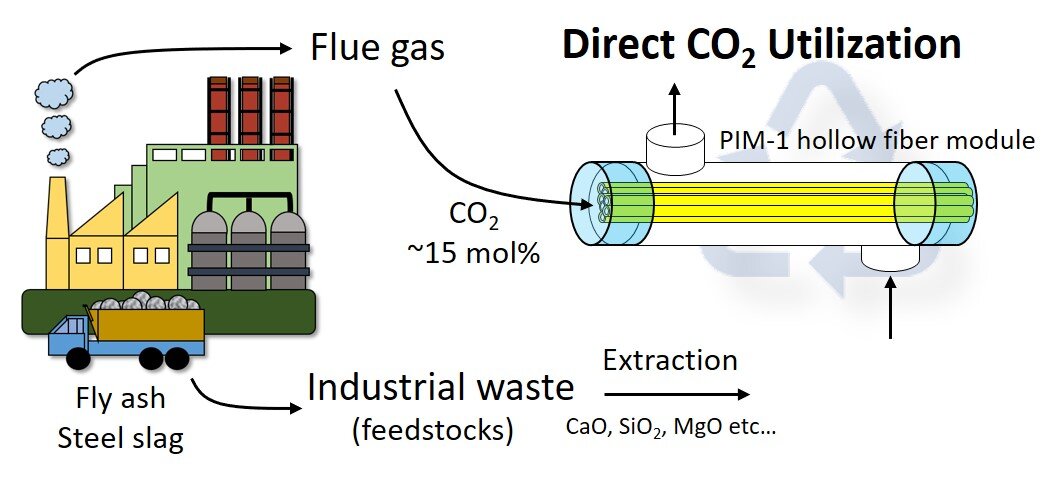Solid Carbonation via Ultrapermeable PIM-1 Hollow Fiber Membranes for Scalable CO2 Utilization
Y.-E. Hwang, H. Seo, K. Kim, D.-Y. Koh* ACS Sustainable Chem. Eng. 8(41) 15620–15629 (2020)
**Journal Cover
https://doi.org/10.1021/acssuschemeng.0c05088
A successful changeover to a future energy system that does not add extra CO2 to the atmosphere, a net-zero emission energy system, is likely to depend on a combination of known technologies enabled by scalable and modular devices. In this article, we discuss prominent technological opportunities and barriers for an integrated approach to carbon capture and utilization (CCU) that can simultaneously exploit both CO2 and industrial wastes. We show that a hollow fiber module based on an ultrapermeable membrane synthesized with the polymers of intrinsic microporosity (PIM-1) has the potential to directly utilize CO2 from the flue gas stack via a continuous solid carbonation reaction. By a quantitative comparative assessment of the continuous PIM-1 module performance for different testing conditions, feasible routes for large-scale CO2 utilization are proposed. We also identified surmountable hurdles in our approaches, such as membrane stability and possible scale formation. An integrated approach of two parallel research streams, CO2 capture and utilization, could provide reliable and cost-effective strategies for large-scale CCU.



